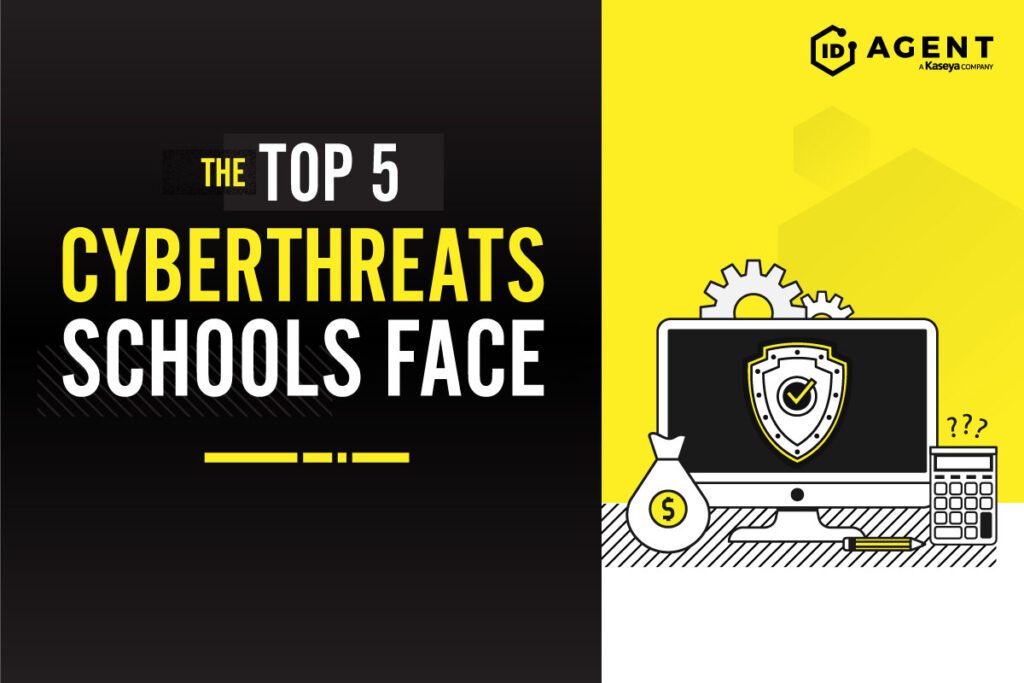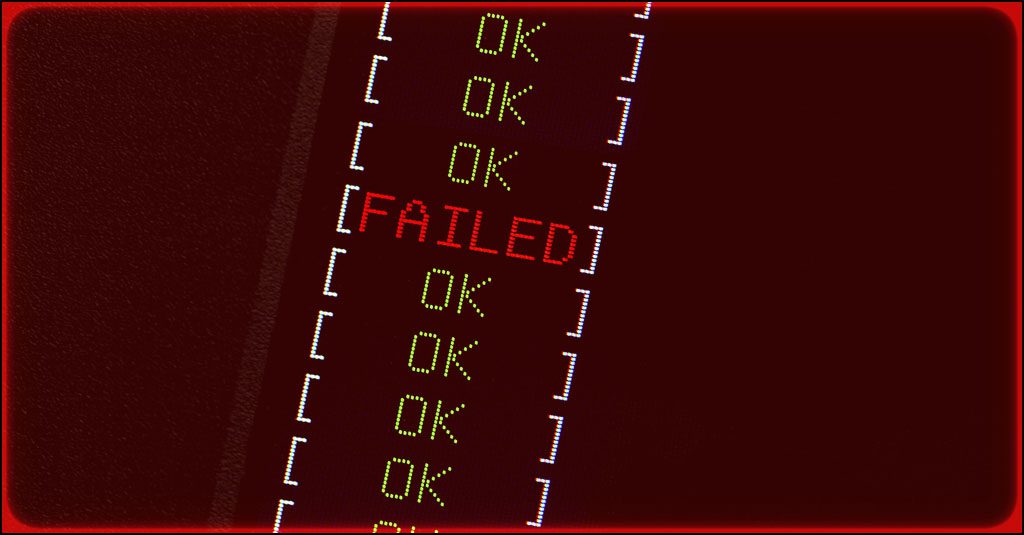Take Precautions Now Against These 5 Trending Cyber Threats

Every day, information technology (IT) professionals strive to keep the systems and data they manage secure against a wide range of dangerous cyberthreats. With the increasing prevalence of targeted and persistent threats, IT professionals need to be equipped with tools, resources and — perhaps most importantly — current threat intelligence that enables them to stay ahead of adversaries through proactive threat detection. These five trending threats should be on every IT professional’s radar.

What challenges will IT pros face in the second half of 2024? Find out in the Mid-Year Cyber Risk Report. GET IT>>
Businesses must endure a growing onslaught of cyberattacks
The digital frontier is fraught with a constant flood of cyberthreats, and the pace isn’t slowing down. In our Kaseya Security Survey Report 2023, we determined that over three-quarters of the organizations we surveyed had fallen victim to a cyberattack in 2023.
Which of the following cybersecurity issues have impacted your business?
| Issue | Response |
| Phishing messages | 41% |
| Computer viruses | 39% |
| Endpoint threats detected | 39% |
| Personal information or credential theft | 34% |
| Business email compromise (BEC) | 31% |
| Ransomware | 27% |
| Supply chain attack | 18% |
| None | 4% |
Source: Kaseya

Learn to defend against today’s sophisticated email-based cyberattacks DOWNLOAD EBOOK>>
5 Trending threats to keep top-of-mind
Bad actors never stop evolving their tactics, techniques and procedures (TTPs), which leaves businesses facing a myriad of dangerous threats like these to contend with every day:
1. Malware – A broad term that is short for “malicious software.” Malware is software specifically designed to harm or exploit computers, networks or devices. Malware can come in various forms, including viruses, wipers, worms, spyware and trojan horses. Its intent is typically to steal information, disrupt normal computer operations or gain unauthorized access to systems. More than half (57%) of our survey respondents have been impacted by malware in the last 12 months.
Defensive tips: Defending against malware involves a multi-layered approach to ensure robust protection.
- Install and regularly update reputable antivirus and anti-malware software to detect and remove malicious programs.
- Keep your operating system, software and applications up to date with the latest security patches to close vulnerabilities that malware can exploit.
- Regularly back up important data to an external drive or cloud service to mitigate the impact of a potential malware attack.
- Ensure that every user on the network receives regular security awareness training.

Learn about the challenges that MSPs face in 2024 in Datto’s State of the MSP 2024 Report. GET YOUR COPY>>
2. Ransomware – A type of malware that encrypts or locks files on a computer or network, rendering them inaccessible to the user. The attackers then demand a ransom, usually in cryptocurrency, in exchange for providing the decryption key to unlock the files. It’s like digital extortion, where the victim has to pay to regain access to their own data. Over three-fifths of our survey respondents (64%) said that their company is likely to experience a successful ransomware attack in the next year, and three-quarters of them said they would struggle to recover.
Defensive tips: Defending against ransomware requires proactive measures to prevent infection and mitigate damage.
- Install and maintain updated antivirus and anti-ransomware that doesn’t just mitigate risk but also helps you bounce back fast if disaster strikes.
- Regularly update your operating system and all software to patch security vulnerabilities.
- Implement a robust backup strategy, ensuring that critical data is backed up frequently to an external location not connected to your network, such as a secure cloud service or offline storage.
- Educate employees about phishing attacks using phishing simulations, emphasizing the importance of not opening suspicious emails or clicking on unknown links.
3. Advanced persistent threats (APTs) – APTs are sophisticated and prolonged cyberattacks orchestrated by highly skilled and organized threat actors, often working for nation-states. APTs typically engage in a series of sophisticated efforts that evade traditional security measures to infiltrate and compromise a target’s network or systems. Often, their goal is to remain undetected for an extended period, allowing them to gather valuable information or gain control over infrastructure.
Defensive tips: Protecting businesses from Advanced Persistent Threats (APTs) requires a careful, comprehensive and sophisticated approach.
- Implement robust network security measures, such as firewalls, intrusion detection systems and endpoint protection to monitor and defend against unauthorized access.
- Regularly update and patch all software and systems to close potential security gaps that APTs might exploit.
- Conduct regular security audits and penetration tests to identify and address exploitable weaknesses in your network.
- Educate employees about recognizing phishing attempts and other social engineering tactics often used by APT actors.
- Establish a rigorous incident response plan that includes regular drills to ensure quick and effective action if an APT is detected.

Learn about the top cyber threats K-12 schools face and how to mitigate them. DOWNLOAD INFOGRAPHIC>>
4. Credential compromise – The unauthorized acquisition and subsequent use of genuine login credentials by malicious actors allows them to legitimately log into an account, system or network. Credential compromise can occur through various methods, including phishing attacks and malware infections. Sometimes, malicious employees sell their credentials, which bad actors can use to quickly penetrate security to do harmful things like steal data or deploy malware.
Defensive tips: Mitigating a company’s risk of credential compromise
- Enforce a strict password policy that requires strong, unique passwords for all accounts and regularly changing them.
- Encourage employees to utilize password managers to generate and store complex passwords securely.
- Educate employees and users about phishing attacks and the importance of not sharing passwords or clicking on suspicious links.
- Monitor and review access logs for unusual activities and implement automated alerts for any unauthorized access attempts.
- Consider using single sign-on (SSO) solutions to simplify and secure the authentication process.
- Monitor the dark web to protect business and personal credentials, including domains, IP addresses and email addresses.
5. Endpoint threats – Endpoint threats refer to security risks targeting devices such as computers, smartphones, tablets and IoT devices that connect to a network. These threats can include malware, ransomware, phishing attacks and unauthorized access, exploiting vulnerabilities in endpoints to infiltrate and compromise the broader network. Attackers may use these threats to steal sensitive information, disrupt operations or gain a foothold for further malicious activities. Strong endpoint security involves implementing antivirus software, regular software updates, strong access controls and regular high-quality employee training to recognize and respond to potential threats effectively.
Defensive tips: Defending against endpoint threats requires a multi-faceted approach.
- Deploy comprehensive endpoint protection solutions like endpoint detection and response (EDR), and antivirus (AV) software, to detect and neutralize threats.
- Regularly update all devices with the latest security patches to close vulnerabilities that attackers might exploit.
- Implement strong access controls, ensuring that only authorized users can access sensitive data and systems.
- Use encryption to protect data both in transit and at rest.
- Encourage employees to practice good cybersecurity hygiene, such as avoiding suspicious links and emails, using strong, unique passwords, and enabling multi-factor authentication.
- Regularly back up critical data and develop an incident response plan to quickly address any security breaches.

Affordable, automated penetration testing is a game-changer. Learn about it in our buyer’s guide! GET GUIDE>>
Kaseya’s Security Suite helps businesses mitigate all types of cyber risk affordably
Kaseya’s Security Suite has the tools that MSPs and IT professionals need to mitigate cyber risk effectively and affordably, featuring automated and AI-driven features that make IT professionals’ lives easier.
BullPhish ID – This effective, automated security awareness training and phishing simulation solution provides critical training that improves compliance, prevents employee mistakes and reduces a company’s risk of being hit by a cyberattack.
Dark Web ID – Our award-winning dark web monitoring solution is the channel leader for good reason: it provides the greatest amount of protection around with 24/7/365 human- and machine-powered monitoring of business and personal credentials, including domains, IP addresses and email addresses.
Graphus – Automated email security is a cutting-edge solution that puts three layers of AI-powered protection between employees and phishing messages. It works equally well as a standalone email security solution or supercharges your Microsoft 365 and Google Workspace email security.
RocketCyber Managed SOC – Our managed cybersecurity detection and response solution is backed by a world-class security operations center that detects malicious and suspicious activity across three critical attack vectors: endpoint, network and cloud.
Datto EDR – Detect and respond to advanced threats with built-in continuous endpoint monitoring and behavioral analysis to deliver comprehensive endpoint defense (something that many cyber insurance companies require).
Vonahi Penetration Testing – How sturdy are your cyber defenses? Do you have dangerous vulnerabilities? Find out with vPenTest, a SaaS platform that makes getting the best network penetration test easy and affordable for internal IT teams.
Learn more about our security solutions, or better yet, schedule a demo! BOOK A DEMO>>
Kaseya’s Security Suite helps IT pros mitigate cyber risk
Kaseya’s Security Suite has the powerful tools that IT professionals need to mitigate all types of cyber risk including email-based threats effectively and affordably without breaking a sweat.
BullPhish ID — This effective, automated security awareness training and phishing simulation solution provides critical training that improves compliance, prevents employee mistakes and reduces a company’s risk of being hit by a cyberattack.
Dark Web ID — Our award-winning dark web monitoring solution is the channel leader for a good reason: it provides the greatest amount of protection around with 24/7/365 human and machine-powered monitoring of business and personal credentials, including domains, IP addresses and email addresses.
Graphus — Automated email security is a cutting-edge solution that puts three layers of AI-powered protection between employees and phishing messages. It works equally well as a standalone email security solution or supercharges your Microsoft 365 and Google Workspace email security.
RocketCyber Managed SOC — Our managed cybersecurity detection and response solution is backed by a world-class security operations center that detects malicious and suspicious activity across three critical attack vectors: endpoint, network and cloud.
Datto EDR — Detect and respond to advanced threats with built-in continuous endpoint monitoring and behavioral analysis to deliver comprehensive endpoint defense (something that many cyber insurance companies require).
Vonahi Penetration Testing – How sturdy are your cyber defenses? Do you have dangerous vulnerabilities? Find out with vPenTest, a SaaS platform that makes getting the best network penetration test easy and affordable for internal IT teams.
See how our Security Suite can be put to work for you with a personalized demo.
- Book a demo of BullPhish ID, Dark Web ID, RocketCyber Managed SOC andGraphus. BOOK IT>>
- Book a demo of vPenTest BOOK IT>>
- Book a demo of Datto AV and Datto EDR BOOK IT>>